Managing for Sustainability
6 steps to a sustainability program for your practice


Sustainability – the frontier that is here.

We are now running out of time, and the question now is not what is happening to the climate, but how bad will it be before the world starts doing enough – Jonathon Porrit, Chair of the UK Sustainable Development Commission.
Managing for sustainability.
The world in which organisations operate has changed dramatically over the past several decades. Marked by the rapid reduction in the use of fossil fuels and the introduction of other sustainable management practices, it is set to alter every aspect of the way people live and work. The organisational winners will most likely be those that act early to make sustainability a key factor in their decision making and centre their practices, products and services around sustainability.
Organisations that don’t are likely to pay a steep price, both financially and socially.
Here in this resource we aim to enable you to:
Sustainability – what does it mean?
Have you wondered what people mean when they say sustainability or corporate social responsibility? If you have, you are not alone.

Sustainability: Meeting the needs of the present without compromising the ability of future generations to meet their own needs – United Nations report of the world commission and environment and development.

There has been a tsunami of companies committing to sustainability. They might set net zero carbon goals, diversify their workforce, or move into new, cleaner lines of business, and this is just a tiny piece of the crest of the wave. The interest in sustainability is likely to grow even more over the next decade across all industries including optometry, as businesses feel pressure from social movements and environmental challenges. Equally, interest and commitment to sustainability will grow as a stronger vision develops on what business owners want to see in the world they create. After all, all businesses are powerful thought leaders and influencers in society, including yours and have the power to choose a better life for all, not just for a few.
Corporate social responsibility (CSR) and sustainability is a business model in which for-profit companies seek to create social and environmental benefits while pursuing organisational goals.
We developed SustainPro to help you learn what being sustainable in optometry means, why it matters, and how to make it part of your business philosophy.
What are the principles of sustainability?
Sustainability and corporate social responsibility is an economic development that meets the needs of present generations without compromising the needs of future generations.
To contribute to sustainability, businesses help our world today and ensure that future generations can also thrive.
In practice, this means that business must consider three key things in their operations: people, the planet and profit.
People, Planet, Profit: the three pillars.
In short, three pillars of people, the planet and profit drive sustainable organisations and their operating strategies.
Your business is a powerful thought leader and influencer in society.
By commencing planning years ahead of time you will not only meet your future personal and financial goals but also help identify your ideal successor and set them up for future success in your practice.
Some more benefits of a well thought through succession plan are:
What will your sustainability journey look like?
You’ll move step by step toward sustainability, because it is a journey. It will begin by looking at your business’ current impact on the environment, and your ecological and carbon footprint. By getting a picture of your business’ carbon footprint, you’ll be able to identify measures that best apply and then find data that can give you meaningful information. You’ll gradually increase and expand your actions and often it will begin by putting your own house in order, looking internally at decision-making, operations, culture, and other areas. You may move on to partnering with suppliers, vendors and other companies can that help you learn and share best practices.
Next, we’ll help you identify and join up forces with community stakeholders. You’ll then tell your audience and market your initiatives to new segments. You’ll communicate strategically how you’ve invested in sustainability and what your position is. You’ll utilise our marketing team to create the assets and be guided on the right marketing activities for your channels. This will attract new sustainably-minded market segments and engage your current audience, that will in turn help to solidify their relationship with you.
But first up, let’s hear from one of our valued supplier partners, Safilo Group, and how they are creating and looking forward to a sustainable future together. We have been working with them on learning about consumers today, and Safilo Group is proof that sustainable businesses see greater financial gains than unsustainable counterparts.
Sustainability is a collective effort and a vision to work towards.
Ultimately, no single business or company can create sustainable development, it is a collective effort. That’s because many sustainability issues, such as climate change, are so huge that they require action by many citizens and organisations. For any single company to create zero emissions, it needs suppliers to innovate cleaner products and regulators and customers willing to support their efforts.
Sustainability requires new forms of collaboration and new thinking about the economy.
Corporate sustainability may not be simple, but it is necessary. Those companies that embrace the full complexity of sustainability ideas sooner than later will contribute to a better world and experience higher long-term profits.
Why wouldn’t we all want to work towards that vision?

“Even if we were to stop all fossil-fuel combustion today, it will still take a very long time for our global environment and ecosystems to recover. Professor Kelvin S Rodolfo, Department of Earth & Environmental Sciences, University of Ilinois at Chicago.”

The carbon footprint
The biggest component of our universal ecological footprint – 48% – and its fastest growing component is carbon dioxide (CO2). Released by the use of fossil fuels and measured by the carbon footprint (CF), the amount of carbon dioxide in the atmosphere has increased more than 40% in the last 200 years. Carbon dioxide concentrates are higher today than at any time during the last 650,000 years.
Energy generation is the largest contributor to the CF and the reliance on fossil fuels to meet humankind’s energy needs continues to grow.If this persists, the ability of the planet to absorb and render harmless the CO2 emitted by using fossil fuels will be compromised long term and the greenhouse effect will increase.

We’re putting 70 million tonnes of pollution into the atmosphere every day, trapping an enormous amount of extra heat from the sun inside the earth’s atmosphere. It’s threatening to push the planet past a tipping point beyond which climate change would be difficult to stop. – Al Gore

The earth has an energy budget.
Energy comes in – through sunlight – and goes out – by radiating back into space. A number of gases in the atmosphere, known as greenhouse gases, trap the heat radiated from the eath towards space. This is known as the greenhouse effect, and when it operates naturally, energy debits and credits remain in balance, keeping the planet warm and habitable.
Burning fossil fuels releases carbon dioxide into the atmosphere and creates most of the human-caused portion of the greenhouse effect. When too much CO2 and other greenhouse gases enter the atmosphere, they trap even more heat, and many scientists believe this has contributed to the global warming of the last 150 years.
A second effect of unnaturally high greenhouse gases in the atmosphere is the ozone hole, which has expanded over the Southern Ocean. This threatens the abundance of life there and throughout the southern hemisphere because ozone-poor air disperses and allows more ultra-violet rays to reach the earth. In optometry we know, this can cause cataracts. It also causes skin cancer and reduced immune systems in mammals.
“Australia has the highest per capita greenhouse emissions in the developed world. It’s more than twice the OECD average and four times the world average” – OECD.

The latest research is clear.
“To avoid the worst climate impacts, global greenhouse gas emissions will need to drop by half by 2030 and reach net zero around mid-century. This essentially means that any human-produced carbon dioxide is removed from the atmosphere through technological or natural means. Reaching net-zero emissions is akin to achieving ‘climate neutrality’.”
– ISO: International Organisation for Standardisation.
How could your practice be positioned to operate in a carbon-constrained future?

To start an assessment of your practice’s position to operate in a carbon-constrained future, consider these questions:
Have you considered ways to exploit the opportunities sustainability may offer?
Have you examined the effects of climate change on your practice’s operations?
Have you analysed your integrated value chain for sustainability?
Your integrated value chain is the entire process your practice uses to produce value beginning with and including external suppliers and ending with and including external customers.
Organisations that understand sustainability and manage it ongoing stand to benefit the most.
Just as an organisation that employs more people than it needs to deliver it’s service or experience would be operating inefficiently and expensively, an organisation producing too many carbon emissions is operating inefficiently and expensively by wasting resources.
Organisations that understand sustainability and manage it ongoing stand to benefit the most. When you have reduced your practice’s carbon footprint as much as possible and further reductions are not cost-effective, buy from suppliers who provide detailed information about their products and services and the projects they use to generate offsets.
Like other aspects of risk management, it’s important to build sustainability into the practice’s decision-making and planning process and to fully integrate it into performance reporting. Each investment should automatically be examined for its long term carbon ramifications and materials use and reuse.
Bramble’s is a supply chain logistics company. Its 2025 sustainability vision is to Pioneer Regenerative Supply Chains.
Examine Brambles’ environmental risk management and its environmental policy here:
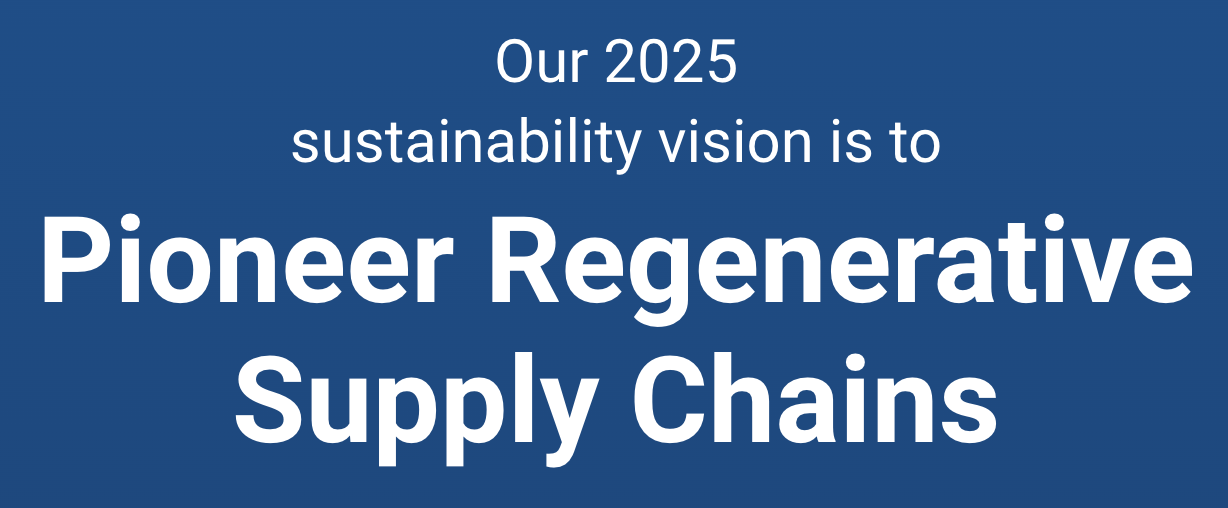

Sustainability is just an abstract concept until you look closely at what your business is doing daily to operate in a more socially and environmentally responsible manner.

ProVision Merchandise Manager
The 3 Ps and the areas of responsibility
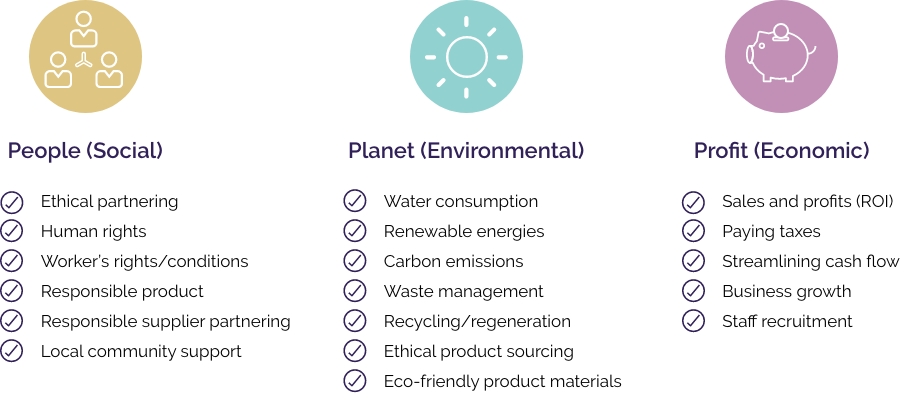
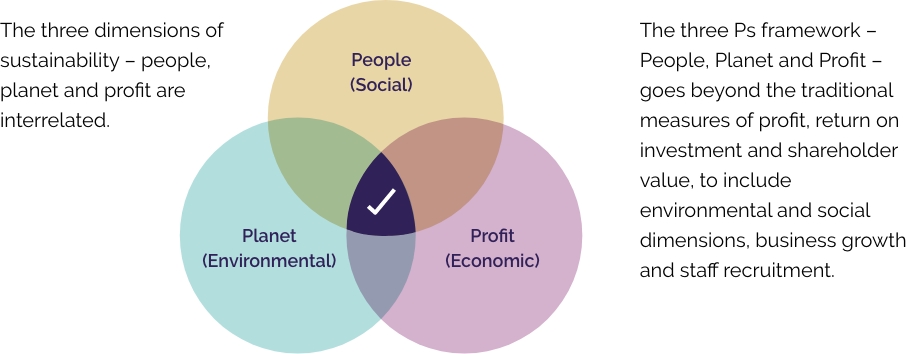
The 3Ps of sustainability are a well-known and accepted business concept. The Ps refer to People, Planet, and Profit, also often referred to as the triple bottom line.
Sustainability has the role of protecting and maximising the benefit of the 3Ps. In addition to the P for Profit and P for People, the other P stands for the Planet. This is because the wellbeing of the individual goes hand in hand with that of our planet. Corporate social responsibility means companies must find a way to make a profit while respecting People and the Planet.
Benefits you can consider when making your business case.
Leading with purpose can positively impact both the planet and your business’s financials. Here are eight benefits of a sustainable business strategy you can use when making the case to your internal team.
Here are 8 benefits of sustainability in business
1. Drive innovation.
Making the switch to sustainable business practices provides an opportunity for new, innovative ideas to grow. Consider this your chance to question the way your practice operates. Are there inefficiencies in your production process? Are there alternatives to how you currently source production materials? What equipment or technology could make your internal processes and product delivery more energy efficient?
These types of questions reveal opportunities to save money on energy and reassess how ethically you source materials. They can also shake up your mindset of “this is how we’ve always done it” and prompt innovative ideas for new business opportunities.
2. Improve environmental and supply risk.
Investing in more sustainable practices can pay off in the form of risk management. By using renewable resources, such as wind, water, and solar power, your practice has greater security over its energy sources.
Driven by a strong business case and falling costs, renewable energy has progressed remarkably over the past decade, to become the preferred power source for many countries. Renewables lie at the heart of a global energy transformation, which offers an economically attractive answer to energy security and climate concerns, and new opportunities for sustainable livelihoods for the millions of people who lack energy access today.
3. Attract and retain employees.
Being a sustainable company can have a big impact on the talent you attract and retain. Most millenials would take a decrease in their salary to work at an envrionmentally responsible company.
Committing to sustainability puts your practice’s values at the forefront, which can attract employees and job seekers who share those values. Hiring and retaining the right team can save your organisation the time and money of having to rehire for multiple roles.
4. Expand audience reach and builds brand loyalty.
A focus on sustainability can not only help attract and keep the right employees, but build a broader, more loyal customer base.
Sustainable businesses see greater financial gains than their unsustainable counterparts. Consumers’ motivation to buy from sustainable brands is on the rise.
Adopting sustainable practices and marketing appropriately can enable your business to reach new, sustainably-minded market segments while building brand loyalty among your customer base.
5. Reduce production costs.
One of the simplest business cases for sustainability is that using fewer resources, or more sustainable ones, can decrease production costs.
Examining your supply chain, production process, and energy use at brick-and-mortar stores and office buildings can help identify places where cutting back on finite resources and switching to greener alternatives is a cheaper option.
Some firms invest in sustainability because the business case is so glaringly obvious, they’d be foolish not to learn about changes made by ProVision that resulted in reducing production costs below.
6. Garner positive publicity.
Another outcome of opting for sustainability is the positive publicity it can garner. Especially if it’s a divergence from your business’s previously established practices or industry standards, your switch to sustainability and investment in the environment can call for press releases and announcements.
Side effects of this positive publicity can be employee pride, sustainably-minded job applicants, and increased customer loyalty and referral rates.
7. Stand out in a competitive market.
In a competitive market, any way to differentiate your product and brand from your competitors is valuable. Sustainable business practices can be a positive way to stand out if your competitors haven’t adopted those practices themselves or match them if they’ve already made the switch to sustainability.
Calling back to research in consumers’ focus on brands’ sustainability practices is on the rise, and your business’s practices could be the sole reason consumers choose your product over your competitors.
8. Set the industry trend.
Sustainability not only helps your practice stand out against competitors but also influences their behaviours. If your practice is one of the first in its field to adopt sustainable practices, it could set your business apart as a trend-setting leader and prompt other practices to follow suit.
How can you make the make business case for sustainability to your team?
You can become a transformative leader and someone who can unite a deep sense of purpose to build a long-term, compounding sustainability growth model in your practice, whilst doing the right thing for society and the community.
Once thought to be opposing goals, sustainability and financial success now go hand-in-hand for many businesses. Some, however, may be skeptical of the claim that a business can do well by doing good. How can you make the business case for sustainable practices to your team?
Pitch and agree on what will drive your business sustainability agenda.
Agreeing on what will drive your CSR/Sustainability agenda involves considering factors such as:

With consumers placing greater value on socially and environmentally responsible, sustainable businesses, it’s only right that the ProVision support office in Melbourne also have a clear position in terms of responsible decision making and ethical business practices.

All of these things will resonate at varying levels so it’s important to align with key drivers that mean something to your practice.
With consumers placing greater value on socially and environmentally responsible sustainable businesses, it’s only right that the ProVision Support Office in Melbourne also has a clear position in terms of responsible decision-making and ethical business practices.
The ProVision sustainability position.
Taking the initiative and leading by example are critical steps towards increasing our commitment to what we believe is important, and the following steps have been taken already to ensure we ‘practice what we preach.
With consumers placing greater value on socially and environmentally responsible sustainable businesses, it’s only right that the ProVision Support Office in Melbourne also has a clear position in terms of responsible decision-making and ethical business practices.
Recycling program implemented: appropriate bins have been installed around the office for food, recyclables, paper, batteries, and printer cartridges.
Paperless office strategy: ProVision office has gone electronic where possible, particularly around photocopy use.
Office creditor review: currently understanding how our creditors and office suppliers are being sustainable.
Further to these commitments, other initiatives will be explored in the year ahead including the following:
Sustainability in the optical industry.
There are two key stakeholders in the optical industry: wholesalers/manufacturers and retailers (practices). Both parties have the opportunity to improve their current position around sustainability, but first let’s look at wholesalers.
It may surprise you to know that there is significant waste produced in the manufacture of optical product, especially considering the small size of items. The eyewear industry consumes lots of energy, produces excessive waste, and despite modest progress in the past few years could be doing more to meet its ethical and environmental responsibilities. Let’s take a closer look at different product categories:
Frames:
For every patient frame or sunglass, there has been a long journey from initial design and prototyping to mass production, with the environmental costs building up at every step.
Most frames are made from a combination of two materials: metal and/or cellulose acetate. Each plastic frame is cut from a rectangular sheet of acetate which (due to the nature of eyewear design) requires two cutout holes, so up to 80% of the plastic used in the manufacturing process can essentially be wasted (unless a recycling process is in place).
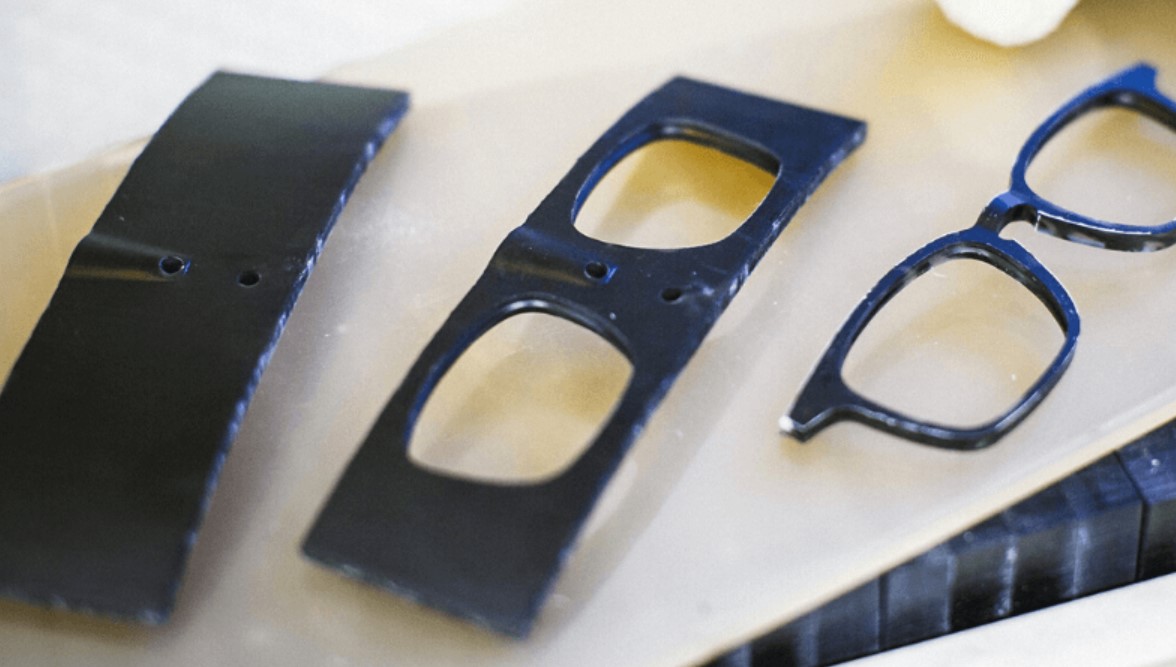
Once the frame has been milled from the acetate sheet, metal screws and hinges are fitted to build the functionality and form into the frame (with a further 20-30% of metal wasted in the trimming process). The frame is then fitted with plastic ‘blank’ lenses to ensure the frame doesn’t warp, with these usually discarded to create even more waste. And this is just the raw material component, excluding the waste generated by the manufacturing process itself.
Contact Lenses:
Demand for contact lenses has been growing consistently for decades, but this growth presents its own sustainability challenges for the eyewear industry. Plastic microbeads* have long been around in the cosmetic industry, but disposable contact lenses are also guilty of contributing to this problem as they contain microbeads.
It’s estimated that 15-20% of disposable contact lenses wearers flush their daily contact lenses down the sink or toilet each day. Given that 304,000 million Australians use daily contact lenses, that is a serious amount of plastic entering the water table annually.
Once flushed, these tiny plastic lenses pose a risk to marine and ultimately human life. When plastic lenses reached wastewater treatment centres, microbes weaken the bonds in plastic polymers of contact lenses. In laymen’s terms, these treatment plants are producing microplastics* from the larger plastic items such as disposable contact lenses.
In the US alone, even if only 15% of people were to flush their lenses daily that still equates to over 1.8 billion contact lenses a year. That is a lot of waste – but is it avoidable?
* Microbeads are tiny solid plastic particles, measuring 1mm in diameter or less. They are deliberately added to cleaning products, skincare products and cosmetics to give exfoliating properties, create ‘gloss’ and to act as fillers to bulk out products. They are a type of microplastic, a more general term given to tiny plastic particles less than 5mm in diameter.
Many of these microbead-containing products are designed to be rinsed off, meaning this plastic is designed to go down the drain. Microbeads are non-biodegradable and take a long time to break down, and their small size makes it almost impossible to filter them out of the water systems and from the environment. Greenpeace has labeled microbeads as toxic time bombs as they are mostly not captured by water treatment plants and end up in rivers, seas, and oceans.
Once in the water, microbeads pose a threat to wildlife, who ingest the plastic particles. This builds as smaller fish are consumed by bigger fish (who are in turn eaten by humans). If the plastic alone wasn’t enough concern, plastic actually binds to chemicals in the ocean, making it more resistant to environmental degradation.
3 Sustainable Retailers Leading The Way.

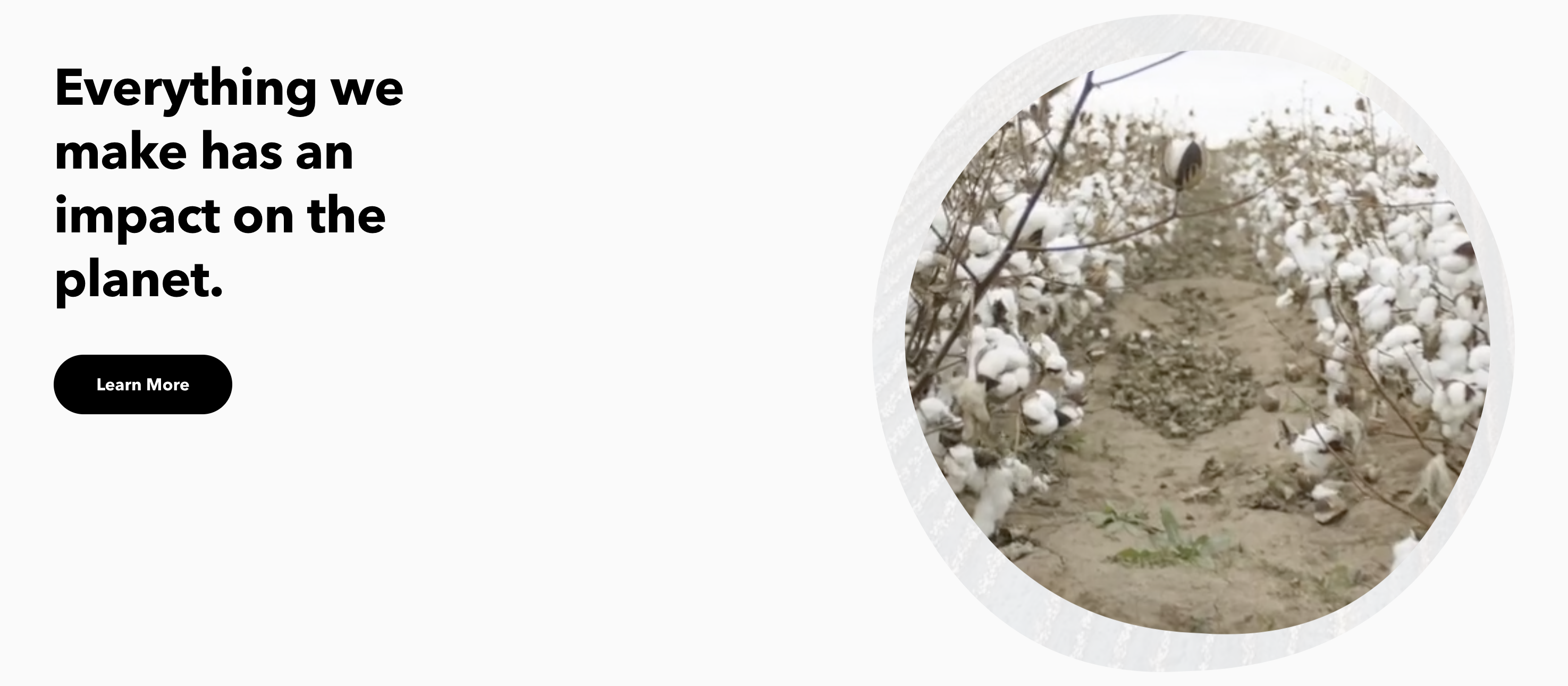
Patagonia
Patagonia’s mission statement reads: “Build the best product, cause no unnecessary harm, use business to inspire and implement solutions to the environmental crisis” which is impressive to say the least.
Quality product is made with an emphasis on corporate responsibility and environmental awareness, Patagonia first and foremost promotes transparency; a factor that is clearly displayed on its website and throughout its branding.
Materials are sourced from the best outlets from around the globe, whether that be from local plants or a sustainable textile factory, and Patagonia has recently moved to donating 100% of their profit to the Patagonia Purpose Trust, making the earth their only shareholder.
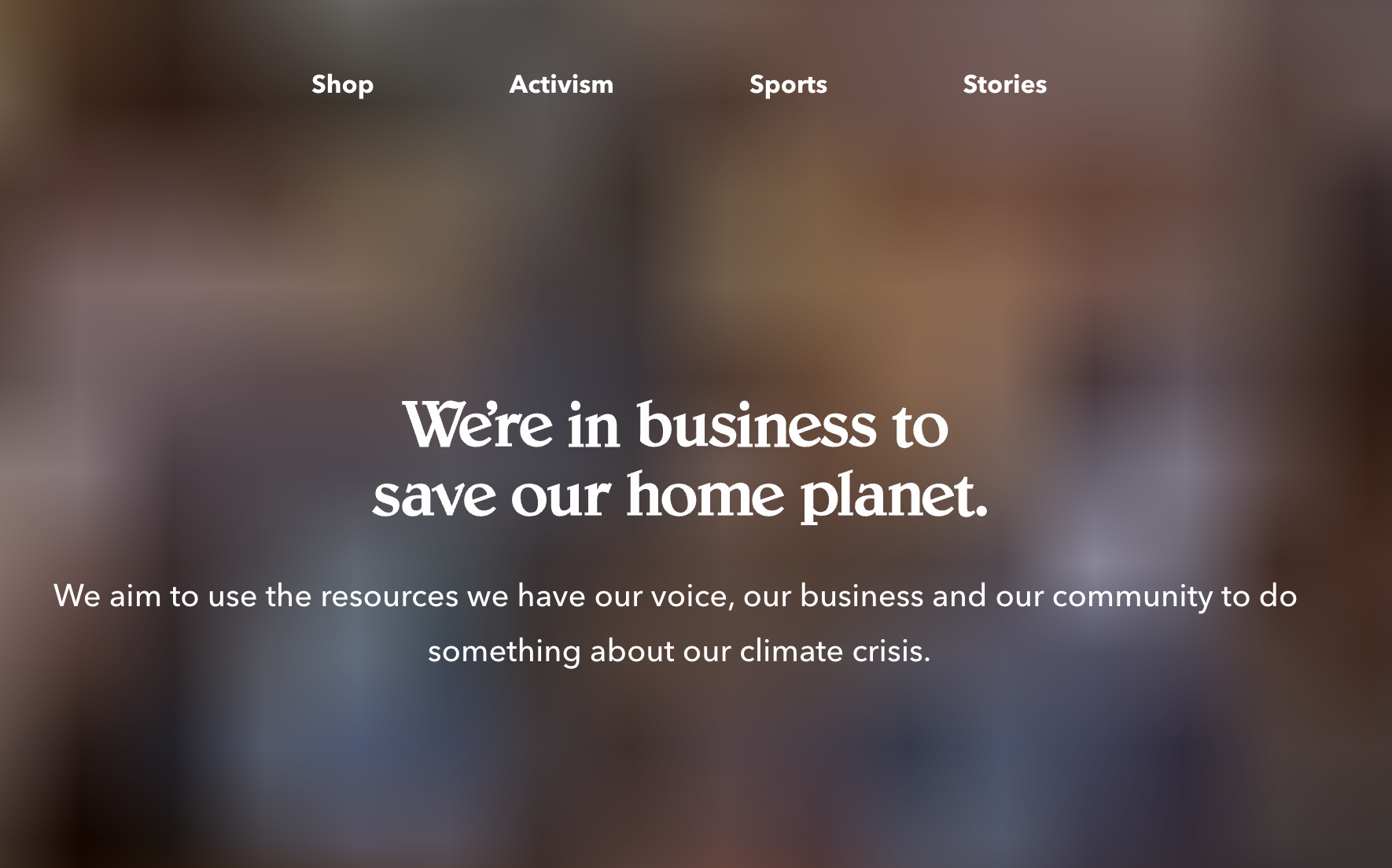
Sheriden

The Sheridan sustainability journey began over 50 years ago when it was founded by passionate environmentalist Claudio Alcorso. The brand’s enduring reputation for quality was founded on his belief that products must be designed to last, and to last beautifully.
Sheridan has a clear purpose and are actively working towards reducing their environmental impact in every area of their operations. They are unshakingly committed to building a better tomorrow.
The Iconic
Generally, fashion production brings with it many social and environmental concerns and The Iconic wants to encourage more customers and brands to join the conversation about sustainability and ethical sourcing. They aim to support customers who share their concerns about sustainability by giving them the ability to shop for products that are better for humans, animals or the environment than conventional alternatives.

Product that is made using at least one material or process that’s better for humans, animals or the environment than conventional alternatives, or product that’s making contributions to the community is represented under a Considered banner. Sustainability is a personal choice and means different things to different people but their Considered product has at least one of thirty defined sustainability credentials (across five categories), allowing customers to shop by what’s important to them. It’s all about choice.

If you’re running a small business then you
might think your commitment to sustainable
business practices is inconsequential, but
your patients don’t all see it that way.
Every business has a different level of
impact but as a whole, all of business
contributes to climate change, pollution
and/or the waste crisis.
There are many paths to increasing
sustainable business practices but to help
you make a start ProVision has devised a
simple execution framework.

ProVision Merchandise Manager
Understand the concept to CSR and sustainability in relation to your business
Create your business case for being sustainable
Build a practical action plan to progress your sustainability position

Engage with all key stakeholders for maximum buy-in and identify priorities
Establish systems/processes to support these outcomes.
Track progress, communicate actions, and meet expectations.
With the ever-increasing consumer trend of placing greater value on socially responsible and sustainable businesses, and a belief that this is the way of the future, your practice has committed to building an ongoing sustainability plan. This template should be used to outline your key drivers and key objectives as identified through the Sustainpro website, and the checklist below can help you identify key focus areas that your practice feels will take you forward on your sustainability journey. Take the time to complete and discuss the below sections to help shape your future plan.
Your action plan is a roadmap to track and manage your ecological footprint.
A well-developed sustainability action plan signals your business’ seriousness about environmental responsibility. The success of the action plan rests upon the ability to track and manage your business ecological footprint.
Sustainable operations positively shape your business brand and image and attract new customers and employees. Sustainability reporting is part of your business’ employer value proposition that helps it attract and retain staff, boost public image and its part of your corporate social responsibility.
Quantifying sustainability isn’t easy.
Quantifying sustainability isn’t as easy as quantifying tangible profit and loss, yet sustainability factors reflect your business strength and weaknesses. But what do you measure and report?
Begin by collecting and reporting information on your emissions, your plans for improving energy efficiency and your targets for reducing emissions. Then look at the indicators that affect the sustainability of your organisation. Once you work out which factors are important to your business’ sustainability, then you can work out how to measure them.
Tools for assessing, measuring and reducing your footprint.
As our sector transitions to a low-carbon future, governments at the federal, state and local level are responding with support, advice and funding for businesses to do more with less.
Here are some of the government support that is available for Australian retailers looking to become more sustainable and reduce the social, environmental and financial impact of running their business.
There are many small business resources for building your sustainability plan. Explore state and federal resources for business and industry we have researched below:
See below how a small business in Canberra outlines its sustainability policy and how this policy aims to integrate a philosophy of sustainable development into all its activities to establish and promote sound environmental practice in our operations.
Put your energy where you can influence.
Greater influence means greater change and more progress towards your goals.
Consider Steven Covey’s Circle of Concern / Circle of Influence Model to ensure you focus on outcomes you can influence. This is where you will make the most difference.
The key is to focus your energy on those things that you can influence – this will enable you to make effective changes. If you do this you will find your circle of influence starts to increase – others will see you as an effective person and this will increase your power. Conversely, if all your energy goes into those things you cannot change your circle of influence will shrink. Not only will you drain your energy, other people may start to see you as unduly negative and critical.
It is important for ProVision’s Supplier Partners to also consider what their future Sustainability position will look like – they too need to be committed to ethical decision-making and sustainable business practices to support you in your goals. Watch here to better understand their commitment to you.

Once your Plan is built, seek out feedback from key stakeholders, that is, suppliers and patients, to further refine actions. How can supplier partners help you achieve your goals, what are they doing that you can leverage off, what values resonate most with your patient base and what role can they play in assisting you?

ProVision Merchandise Manager
From eco-friendly manufacturing processes to natural materials, to programs that give back to patients and communities; optical companies are finding new ways to strengthen their sustainability commitment. As social responsibility and sustainability become more important to your patients, it’s important that you are partnering with the right suppliers to meet this expectation. All of ProVision’s current Preferred Supplier Partners are already on the sustainability journey to varying degrees and that will continue to improve in the years to come.
A full listing of what ProVision Supplier Partners individually contribute to this space can be found below:
Investigate current initiatives such as recycling and regeneration programs, and explore how to get your practice involved
Meet with local education bodies to share your practice plan, to build community awareness
Meet with universities to share your practice plan, to build community awareness

Understand who accepts donations of goods and investigate if your practice could become a central drop-off point for the local community
There are many worthy initiatives under way in local jurisdictions that you may be able to align your Practice Plan goals with
Working on shared initiatives with retailers in your area is a great way to build your profile and increase your sustainability message in the community.

To achieve sustainability goals, the entire
practice has to believe that goals are
realistic and attainable (even better if they
are aspirational!). Having a clear focus each
quarter and knowing how you will track and
measure these goals definitely increases the likelihood of achieving them!

ProVision Merchandise Manager
To reinforce: We are at an incredible turning point in our culture.
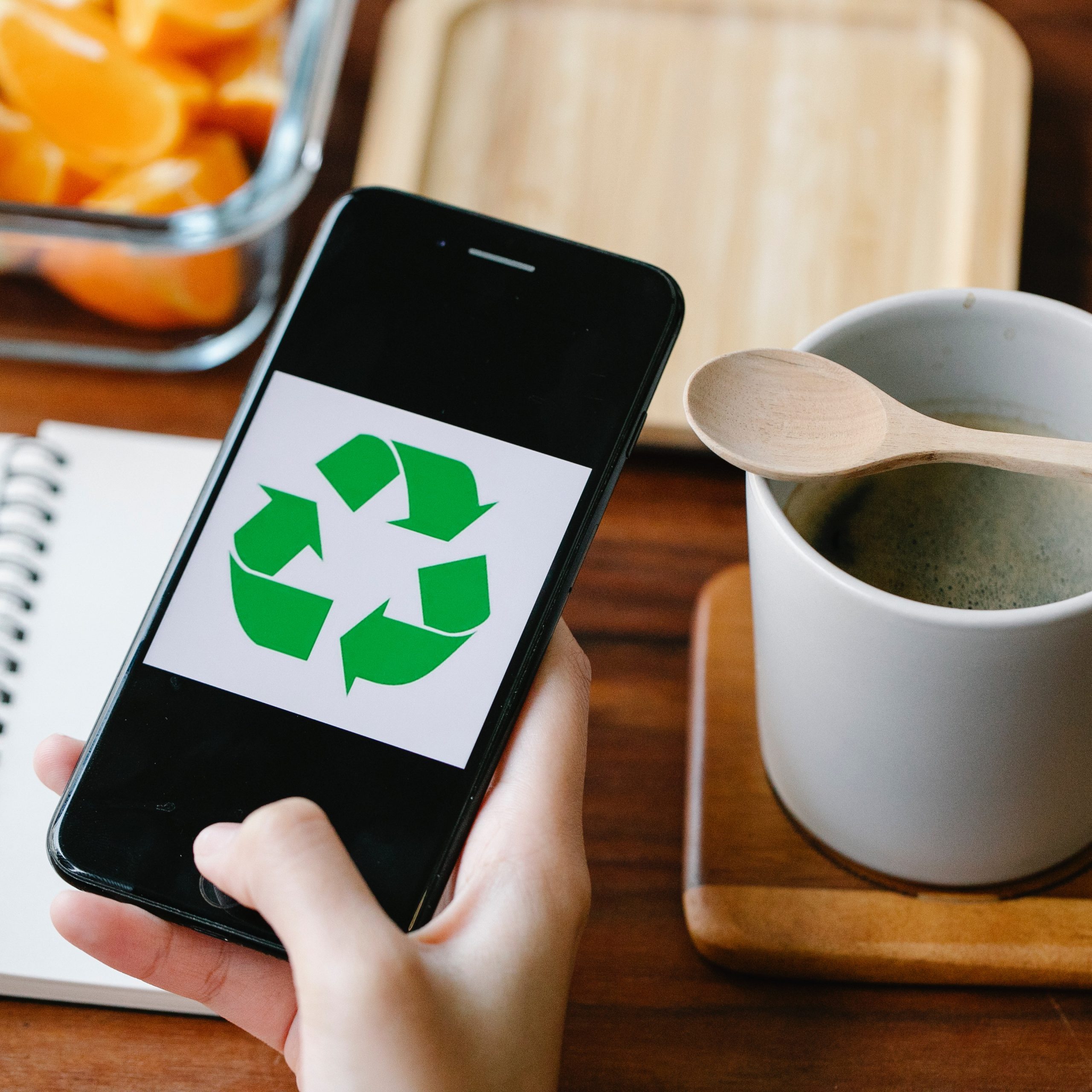
Consumers are more conscious and knowledgable of their environmental impact than ever. More and more businesses are being launched that are genuinely deeply grounded in eco-friendly principles, and their leaders see sustainability as just as important as profitability if not more. While there is a sense of despair about current rate of climate change and what that means, there is also optimism about the fact that even as a small business, you are still an important player that can impact to change the paradigm.
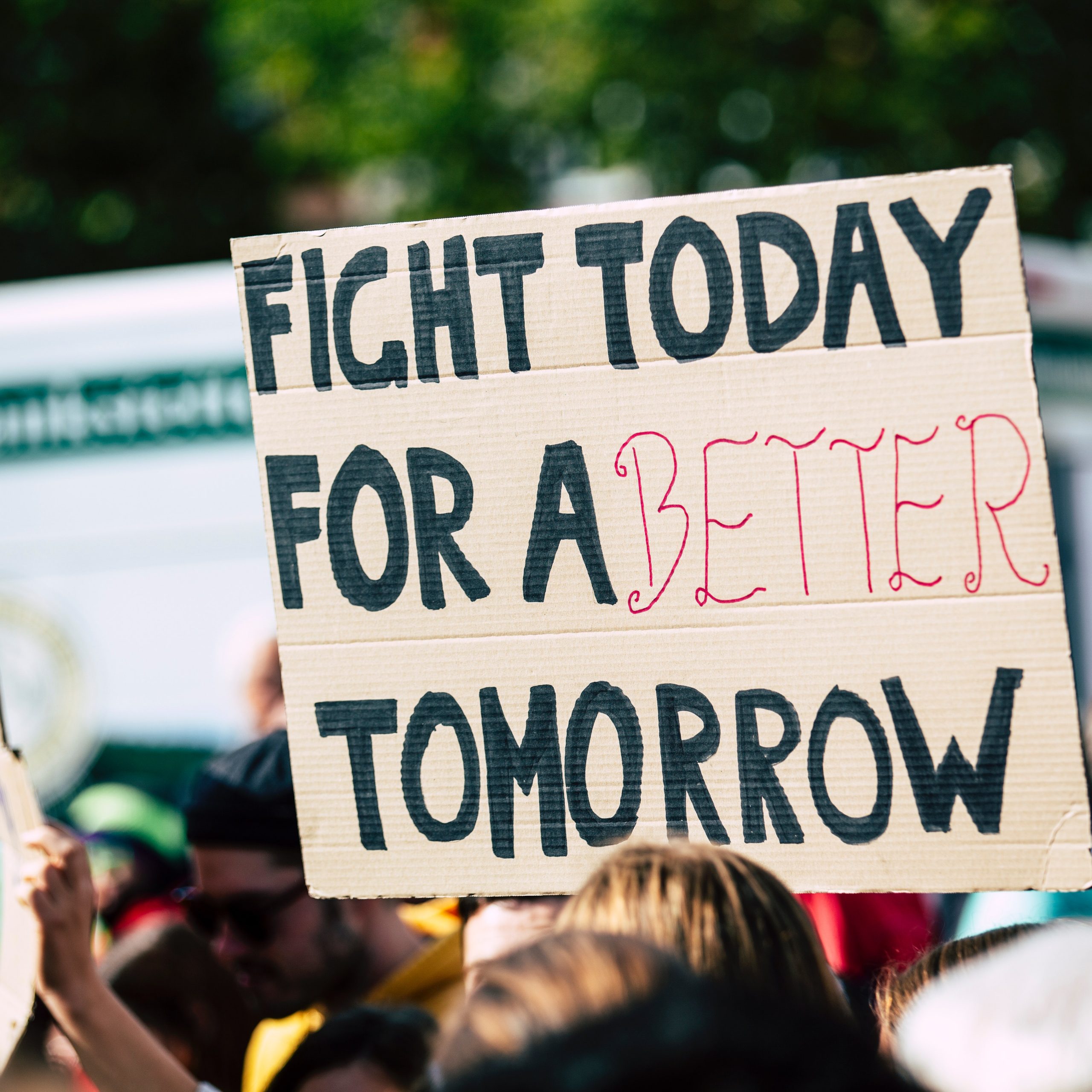
Setting game changing sustainability goals.
Think about fundamental, innovative improvements you can make your business model. Set incremental goals as well as long term goals. We encourage businesses to start with things like going solar, installing energy efficient temperature control and lighting. But we also encourage thinking big. Such as a long term goal to make measurable progress on carbon emissions, or plastic reduction or elimination becoming zero waste.
Get everyone on board and excited.
To achieve sustainability goals, the entire team has to be on board and excited. All of the team need to know what you’re working on each business quarter and working to achieve.
Identify your practice’s most meaningful impact.
Take the time to think through your main activities. Get clear on the main activities that drive the bulk of your practice’s environmental impact. It is likely to be freight and logistics, packaging, the end life of the product, the downstream impact of what consumers do with the packaging, the energy used to run your practice to the upstream impact of where the raw materials came from to create the products you sell.
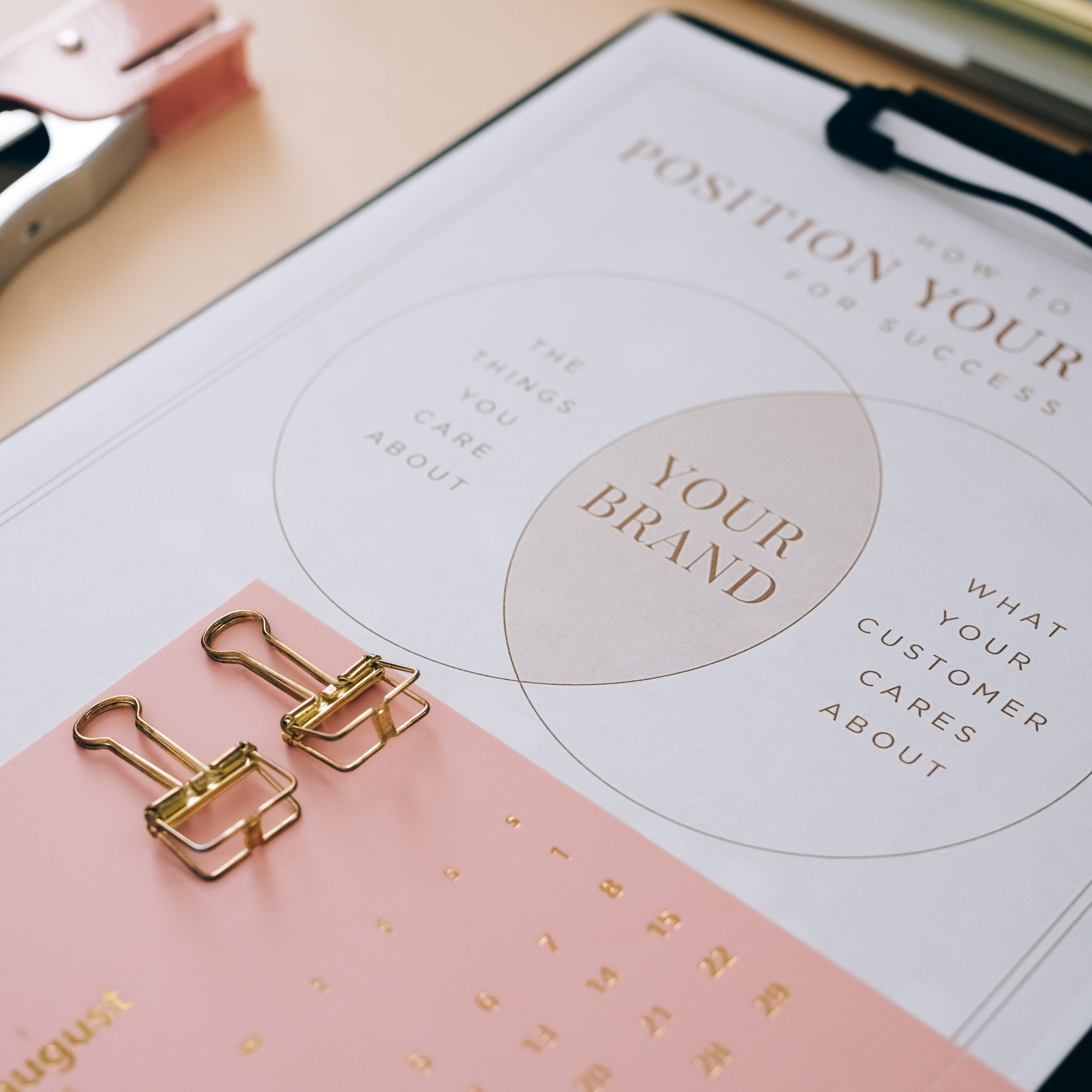
Determine how you will measure what matters.
You can’t change what you can’t measure. Measurement is a difficult aspect to achieving sustainability and goals. Carbon offset organisations have great tools to get a broad estimate on your emissions. You can find footprint calculators online.
Engage university students who are studying sustainability.
There are tools that can help you get an estimate of your footprint. Contact your local universities to find students studying sustainability and measurement to see if they can support you.
Be aware of local and national priorities.
There are a number of existing commitments that are made to reductions in greenhouse gas, elimination of plastic, water use reduction and pollution reduction. Your sustainability goals should meed any relevant industry goals.
Examples of sustainability goals to measure:
Carbon – achieving a target factor of emissions per product sold, achieving carbon neutrality.
Green commute – team members car pooling, using public transport or walking to work.
Green freight / shipping – Emissions associated with freight and shipping products cut by x%
Fresh water use reduction – Using less fresh water to operate practice
Zero waste – Waste generated by supply chain upstream and downstream is cut
Eliminate plastic – eliminate the use of materials that become rubbish and are potentially dumped into the environment. Donate to causes that that actively remove these from the environment.
Energy efficiency in practice operations – effects of temperature control and lighting and solar panels.
One of our members Gulf & Ranges Optometrists in South Australia have been on this journey for some time now and fully appreciate the importance of having a plan that can be tracked and measured. Sharing their successes and achievements with their patients has built increased loyalty in the sustainability space.

Extend and refine your Practice Plan by: setting realistic but aspirational goals – waste or energy reduction targets, recycling improvements, practice staff education sessions, redesigning of internal processes, communicating with patients on sustainability etc, having a sustainability framework to apply to future business decisions, and identifying key advocates and collaborators.
We also recommend you get your team set up as a new users of ProLearnMAX if they haven’t already. Email the name, email address and position title of your new team member to education@provision.com.au and the education team will ensure it is all set up and ready for you.
Tracking, measuring and sharing.
Track progress, communicate actions, and meet expectations. Have tools to communicate your sustainability progress to patients and supplier partners – social media content, digital advertising, local community groups, ambassador or key advocate promotion, and appoint a dedicated green specialist from your practice team to lead the charge in terms of sharing your practice progress and achievements.
Whilst your Practice Plan has been shaped by key drivers that mean something to your team, you should also be encouraging others to join your sustainability journey. There is everything to be gained by sharing your plan, communicating your actions, and celebrating with suppliers and patients alike when you reach your goals or exceed the expectations you’ve set – don’t let your intentions or your achievements be your best kept secret.
Goal sharing.
To help you communicate with key stakeholders such as supplier partners and patients, two templates have been developed as a start point for communications. These can be tailored accordingly based on the message you would like to relay, but they will make it easier for your team to know where to start / shorten to suit your message.
Create Your Patient Education Material
A shift has occurred in the mind’s of consumers. Today’s consumers expect more transparency, honesty, and tangible global impact from companies and can choose from a raft of sustainable, competitively priced, high quality products.
Environmental and social responsibility is a significant factor that affects a portion of your current and new consumer’s evaluation of your practice service, product and experience and intent to buy.
Consumers now believe they have a responsibility to purchase products that are good for the environment.
Consumers want to buy sustainable products, from sustainable businesses and sustainability information has a significantly positive impact on consumers’ evaluation of a company, which translates into purchase intent. Consumers are shifting purchasing decisions to brands with integrity, social responsibility, and sustainability at their core.
We have created digital assets for your practice to use to communicate to your audience your positioning and goals in sustainability. We have created marketing plans to assist you to plan and measure your marketing activities.
Your Practice Education Plan
We’ve created a template for you to develop your practice education plan to build awareness.
To help build awareness across your practice team, ideally sustainability should be discussed on a regular basis – firstly to introduce the concept and eventually to ensure that successes are celebrated in terms of your Practice Plan milestones being reached.

It’s important to remember that the value
attached to sustainability is growing at a
rapid pace globally, and it’s not just the
responsibility of business.
Each and every one of us can make a
difference individually by putting our best foot
forward and committing to the greater good.
The legacy left for future generations needs
to be one that was based in ongoing change
and improvement, and there is no better time
to start on that journey than now.

ProVision Merchandise Manager
Sorry, the comment form is closed at this time.
No Comments